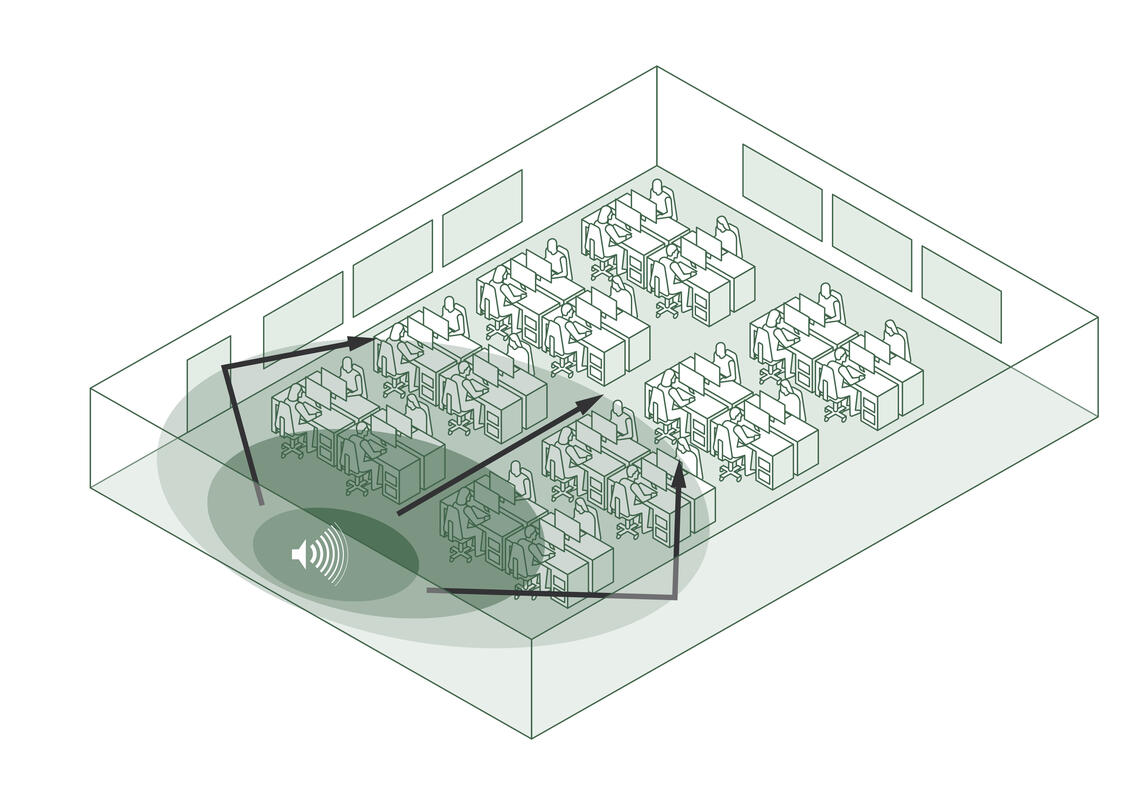Noise in the offices is very unlikely to cause us permanent consequences, but it is certainly not a welcome companion. It causes fatigue, irritability and loss of concentration, and any interruption affects our performance. According to California scientists, it takes an average of 33 minutes for employees to return to their original level of concentration after a break . "The differences in productivity are striking. Especially for more complex tasks, where performance in a noisy environment is up to 50% less accurate, "explains Iveta Králová, Key Segments Manager of Ecophon, which has been developing and selling acoustic systems for noise absorption for almost forty years.
Acoustics of six different types of office space
So noise in offices is a real problem. Until last year, however, there was no precise tool to define what acoustic conditions should prevail in different types of offices and how to achieve them. The new standard specifies a total of six different types of office space:
Premises where the activity is not yet known
Premises for tele and video communication (eg call centers, support centers)
Premises for cooperation between people at the nearest workplace (eg marketing departments)
Premises for small-scale collaboration activities (eg HR, accounting department)
Premises for contact with the customer (eg receptions, post offices and banks)
Premises for mixed activities (combination of the above)
A key surface from an acoustic point of view? Ceiling!
ISO Standard 22955 clearly considers the ceiling to be the most important surface in open office space in terms of room acoustics. This should ideally be equipped with a full-area ceiling. As for the surface treatment of the walls, it is not so effective. However, sound-absorbing wall finishes are considered by the standard to be a good way to reduce reverberation time and limit sound propagation in poorly furnished open-plan offices. "For example, acoustic walls and ceilings made of glass wool are used, which has an exceptional ability to absorb sound. Some systems, such as Fade acoustic plaster, can also be applied to various surfaces, including vaulted or curved ceilings, ”says Iveta Králová.
According to the standard, floor finishes do not have a significant effect on the room acoustics of offices. "For that to happen, it would have to be highly specialized solutions, such as perforated floors with cavities. Soft floors only slightly increase noise absorption in higher frequency bands. The main acoustic benefit of carpets is the minimization of sound reflections, "reveals Iveta Králová.
ISO 22955, on the other hand, attaches great importance to workstation layouts or space geometry: “Normal ceiling heights in open-plan offices increase privacy for conversation. The standard therefore recommends avoiding higher than standard ceilings. It also literally states that it is necessary to avoid long and narrow shapes of office space, because they support the spread of sound, "says Iveta Králová.
New parameter: Acoustic attenuation between workplaces
The ISO 22955 standard introduces a completely new parameter for evaluating the acoustic quality of offices - the so-called acoustic attenuation between workplaces (DA, S). Unlike many other room acoustics parameters (eg reverberation times or background noise levels), DA, S indicates the difference in noise level between its source and receiver. Therefore, several DA, S values will be needed to evaluate the acoustics in most open office spaces.
As the table below shows, this indicator provides acoustics with a tool to assess whether activities are separated by a sufficient degree of acoustic attenuation. Acoustic design evaluation based on this parameter can be used to specify the difference in activities between two workplaces in terms of noise reduction.
The standard not only for professionals
ISO standard 22955 will be fully appreciated by acoustics, architects, designers and other professionals. Interestingly, however, the new standard is also suitable for laymen. This is extremely important, because in the case of reconstructions, for example, the investment in room acoustics is often not decided by a professional, but by a representative of the company's management.
"Management simply feels the need to do something with unsatisfactory acoustics, but does not know what to decide on the basis of. This task is often entrusted to the CFO, who, however, rarely knows what to ask suppliers. This new standard changes, "explains Králová, and continues:" It contains a detailed questionnaire that management can distribute to its employees. Based on the answers, the management will better understand which sounds or which spaces are most problematic for the workers from the acoustics point of view and what their preferences are in this area. The requested contractor will then know exactly what priorities to address in the contract. The standard therefore makes life easier for both contracting authorities and suppliers, which makes it literally a revolutionary tool in the field of office room acoustics. ”







